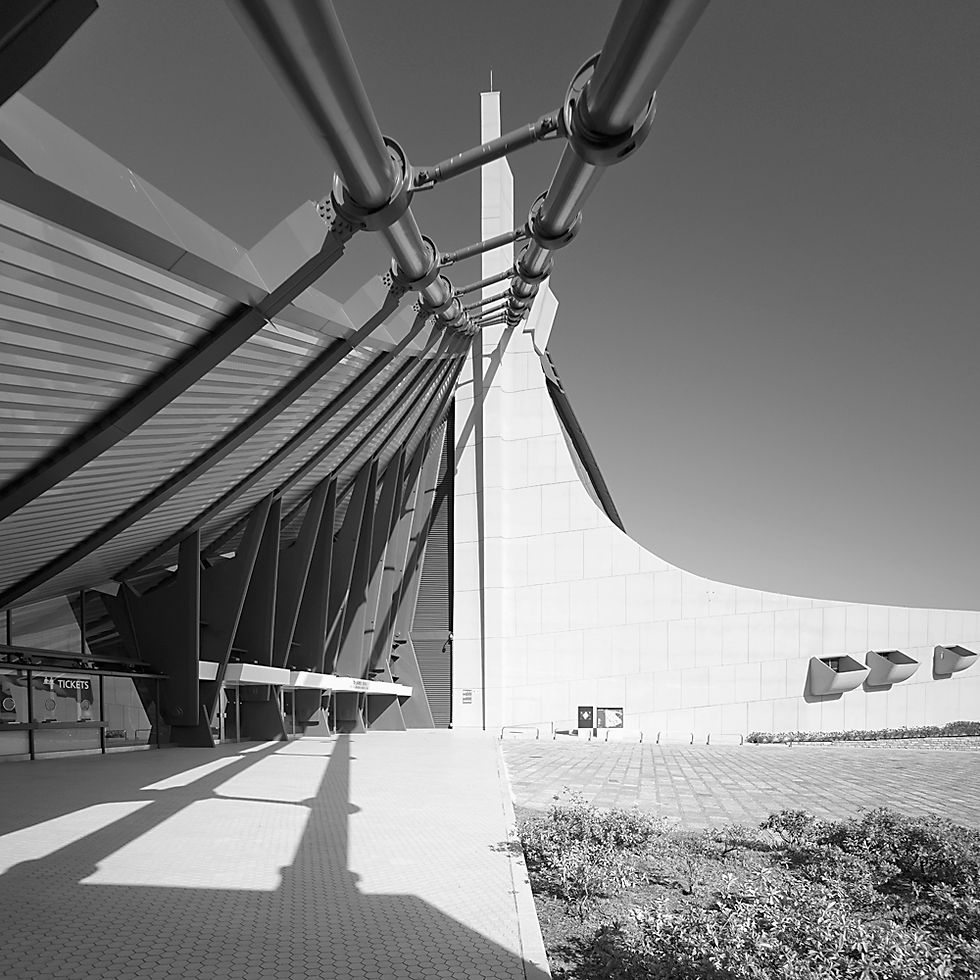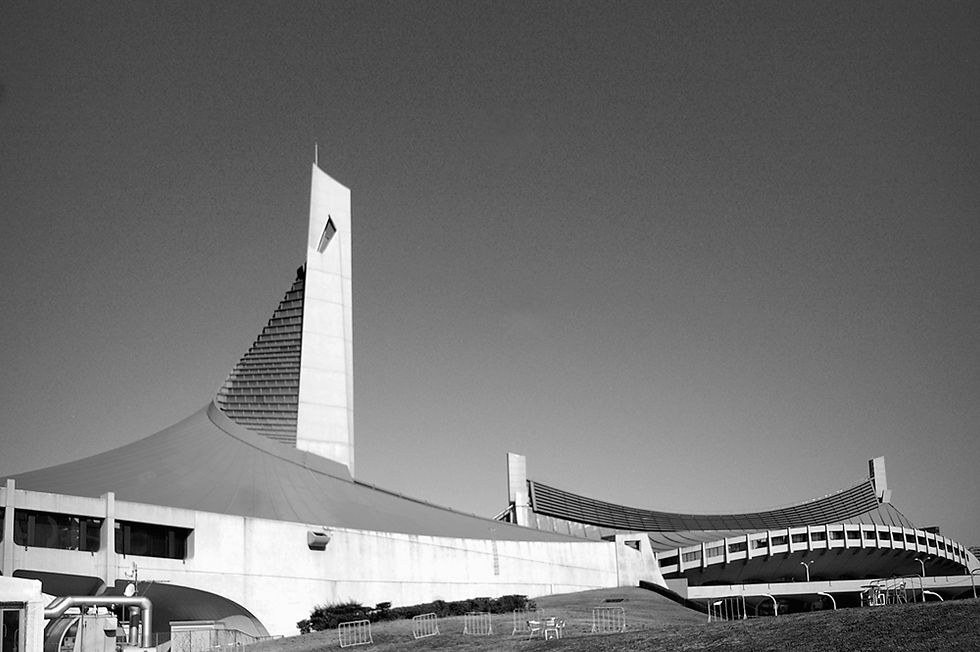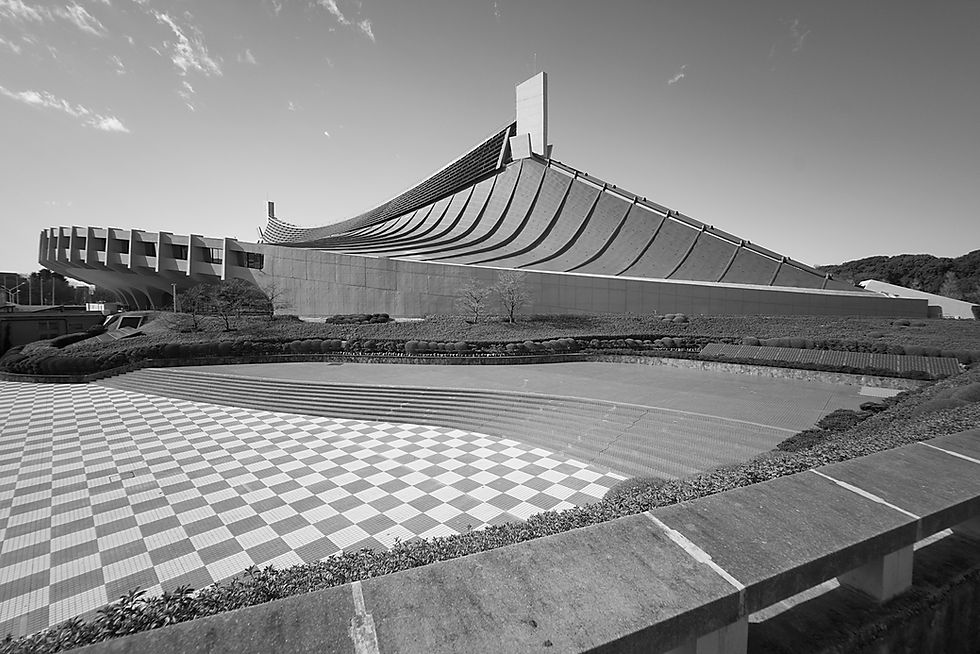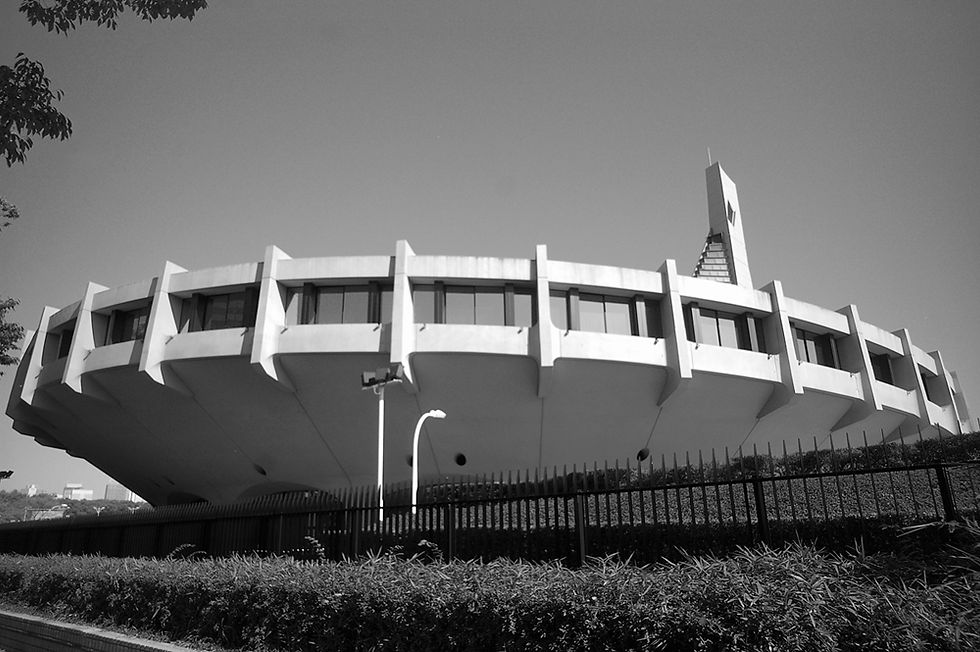Do|Co|Mo|Mo|Japan|16 : Tokyo Olympic Stadium : Kenzo Tange
- john barr
- Jul 24, 2020
- 4 min read
Updated: Apr 20, 2023

Do|Co|Mo|Mo is an international organisation dedicated to the Documentation and Conservation of buildings, sites and neighbourhoods of the Modern Movement. The Japanese branch has selected 100 works as representative of the development of the Modern Movement in Japan. In a series of short posts I will feature some of the selected works that I have had the chance to visit and photograph. This post features the Yoyogi Stadium, designed by Kenzo Tange for the 1964 Tokyo Olympics...
Before they were postponed until 2021 due to the coronavirus pandemic the opening ceremony for the 2020 Tokyo Olympics was due to take place today, July 24, and so this seems like an appropriate time to review the stadium designed by Kenzo Tange the last time the Summer Olympics were held in Japan. It is interesting to note that the 1964 Olympics took place in October to avoid the heat and humidity of the Japanese summer. Tokyo is incredibly hot and humid in July and August but whereas in the past events could be adapted to suit natural conditions it seems that nowadays everything is subordinated to broadcasting schedules and a general demand for instant gratification – like eating fruit out of season.
Background
Tange designed two adjacent halls, one large and one small. Neither of these was THE Olympic Stadium, the main stadium where the opening and closing ceremonies were held, where the Olympic flame was lit, and where the iconic events were staged. And yet Tange’s stadium came to symbolise the games and, more than that, along with the Bullet Train, it came to symbolise the re-emergence of Japan as a modern industrial and technological power.

Yoyogi Olympic Stadium, Tokyo : Kenzo Tange (1964). Small Hall in foreground with Large Hall behind.
Design
To design a building that marked Japan’s return to the international stage as a technological power would require the architectural equivalent of the Bullet Train: world-leading, cutting edge design. At that time the cutting edge in stadium design resided in the U.S.A and Tange turned in that direction for inspiration.
As noted in the previous post, Tange and structural engineer Yoshikatsu Tsuboi had been investigating the possibilities of concrete folded-plate and shell structures and had used that technology on a number of projects. But concrete shells were time-consuming and expensive to build, and could no longer be considered as cutting edge technology.
Meanwhile, in the U.S.A, Matthew Nowicki’s design of the first cable suspension roof for the Dorton Arena in Raleigh, North Carolina, completed in 1952, opened up new possibilities for large-span structures that were lighter and cheaper to build, and the cutting edge in using that technology, and in stadium design, was Eero Saarinen’s Yale Ice Hockey Stadium, completed in 1958.
Tange’s design has two halls, large and small, and the design of the large hall in particular borrows from Saarinen’s Yale design. Both Saarinen and Tange employ a large, curvaceous roof with a central spine that runs the length of the building and is supported on two legs, one at each end. Running on either side of the central spine the concrete structures forming the edges of both buildings are curved in plan so that the buildings bulge out at the centre and sweep back in towards the spine at the ends. The spine is higher than the edges, and steel tension members are suspended between the spine and edges to form the supports for roof cladding. In essence, both buildings are large ridge tents.

Yoyogi Olympic Stadium, Tokyo : Kenzo Tange (1964). Large hall - essentially a ridge tent.
There are two major differences between Tange and Saarinen’s designs. Where the spine of the Yale Hockey Rink is formed by a convex catenary arch with a high point at its centre, sweeping down to low points at the ends, the Olympic Stadium reverses this by using a concave suspended spine strung between the vertical supports at each end of the building, resulting in a low point at the centre, sweeping up at the ends. The other major difference is that, where the Yale building is symmetrical either side of the central spine, the two halves of the roof of the Tokyo building are extended eccentrically, on either side of the spine and at opposite ends, to form entrance lobbies at either end of the building. Although the roof over the main arena is actually symmetrical either side of the spine, the overall impression externally is of a dynamic twisting.

Yoyogi Olympic Stadium, Tokyo : Kenzo Tange (1964). Large Hall - roof extended eccentrically at either end of the building and on opposite sides of the spine to form entrance halls at both ends.
The small hall is an inventive variation on the theme of the large hall, where the suspended roof members radiate from a single mast placed on the perimeter of a circular plan in a dynamic reinterpretation of the circus tent.

Yoyogi Olympic Stadium, Tokyo : Kenzo Tange (1964). Small Hall - dynamic reinterpretation of the circus tent.
Significance
Tange’s Olympic Stadium marks the end of an era in Japanese architecture. Whilst the 1964 Olympics marked the final step in Japan’s restoration to the international stage, they also represented the end of an era in which the Japanese state had sought to use, first military force and then architecture as a tool to promote its political goals, both at home and overseas.
Going forward, the Japanese would pursue international expansion, not through force and the export of Japanese Values through an imperial architecture but through commerce and the export of Japanese manufactured goods. And for that the government relied on Japanese industry, not Japanese architects.

All images by John Barr unless otherwise noted
© John Barr 2020
The story of Japan’s post-war super-rapid industrial, commercial and economic rise is well known. It had caught up by adopting Western technology and then developing its own industries that could compete with, and in some sectors surpass, Western industrial powers. Its rehabilitation as a technological and industrial force was marked by the inauguration on October 1, 1964 of theShinkansen(Bullet Train) line between Tokyo and Osaka. Nine days later its return as an international player on the world stage was confirmed by the opening ceremony of the Tokyo Olympics.




Comments